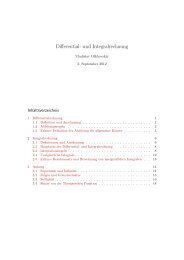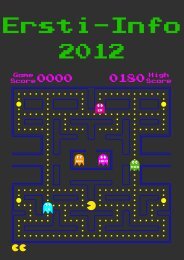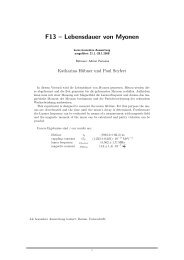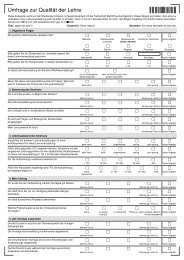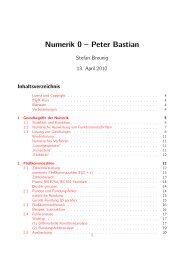Extrasolar Moons as Gravitational Microlenses Christine Liebig
Extrasolar Moons as Gravitational Microlenses Christine Liebig
Extrasolar Moons as Gravitational Microlenses Christine Liebig
Create successful ePaper yourself
Turn your PDF publications into a flip-book with our unique Google optimized e-Paper software.
CHAPTER 1. INTRODUCTION 5<br />
tool to discover an Earth-Moon analogue, but concluded that finite source effects<br />
would probably be too severe in realistic observing situations. Williams and Knacke<br />
(2004) published the quite original suggestion to look for spectral signatures of<br />
Earth-sized moons in the spectra of Jupiter-sized planets. Cabrera and Schneider<br />
(2007) proposed a sophisticated transit approach to detect “binary planets”,<br />
i.e. planet-companion systems with a m<strong>as</strong>s ratio close to unity. Lewis et al. (2008)<br />
analysed pulsar time-of-arrival signals for lunar signatures. None of these methods<br />
h<strong>as</strong> achieved successful detections yet.<br />
Han (2008) undertook a new qualitative study of a number of microlensing constellations<br />
finding non-negligible light curve signals occur in the c<strong>as</strong>e of an Earthm<strong>as</strong>s<br />
companion orbiting a 10 Earth-m<strong>as</strong>s planet at the right angular separation.<br />
For planets with m<strong>as</strong>ses in the m<strong>as</strong>s range between Uranus and Jupiter, he defines<br />
regions of possible satellite detections <strong>as</strong> the region of angular separations between<br />
the lower limit of one planetary Einstein radius and an upper limit at the projected<br />
Hill-radius average. We do not quite agree with this proposition, <strong>as</strong> will become<br />
clear during the presentation of our results.<br />
Outline<br />
In chapter 2, the b<strong>as</strong>ic concepts of gravitational lensing are outlined and in particular<br />
the application to planetary lensing is briefly summarised. Chapter 3 gives an<br />
extensive overview over how we approached the given problem of identifying light<br />
curve perturbations caused by a moon, and which methods are used to solve it.<br />
Because we had to restrict our research to a subset of possible scenarios involving<br />
a moon, these choices are motivated in chapter 4 by discussing the <strong>as</strong>trophysical<br />
context that we are dealing with. Chapter 5 presents the results of our simulations<br />
and a first interpretation. This thesis ends with concluding remarks in chapter 6.<br />
The appendix chapters A and B contain additional documentation in a visual and<br />
numerical form, respectively.



